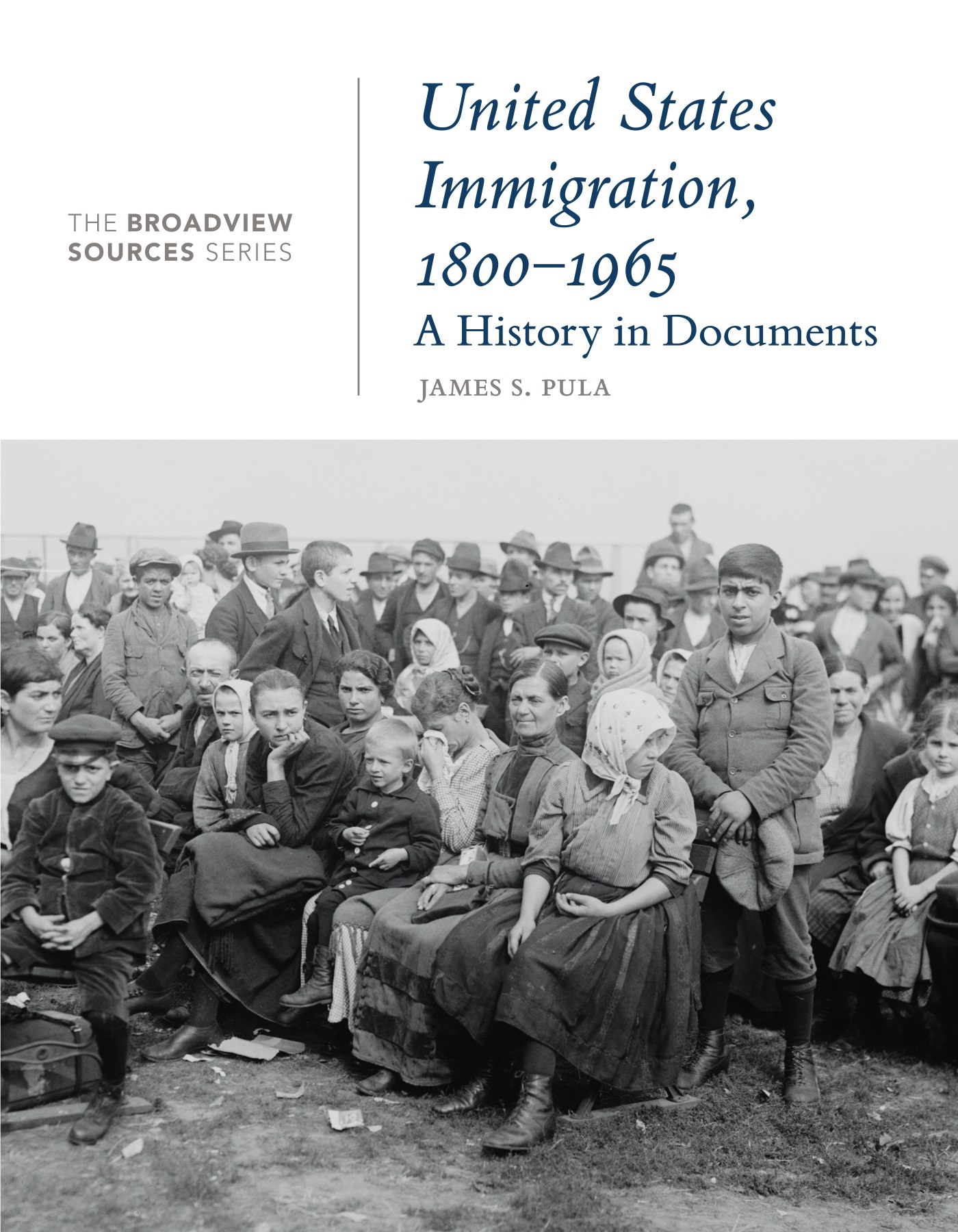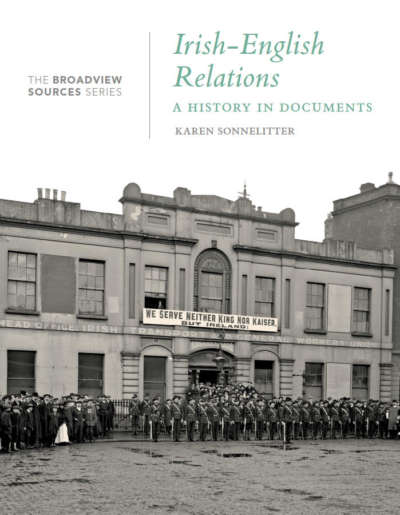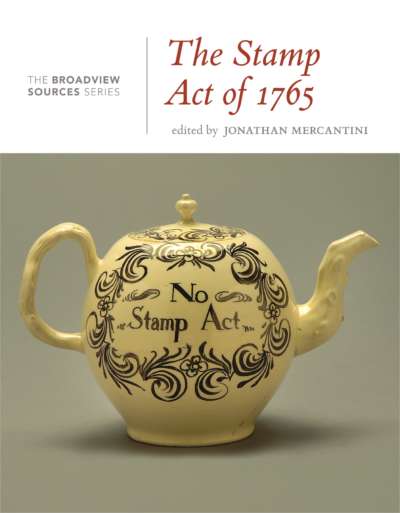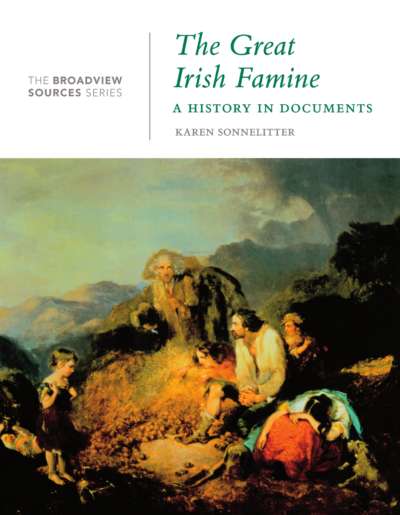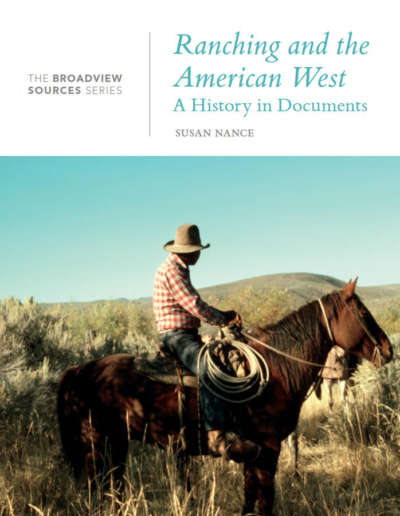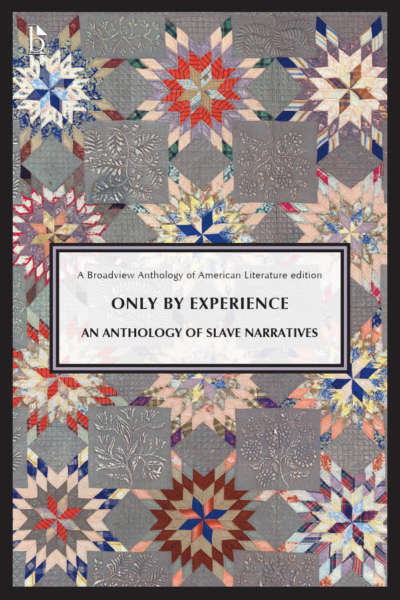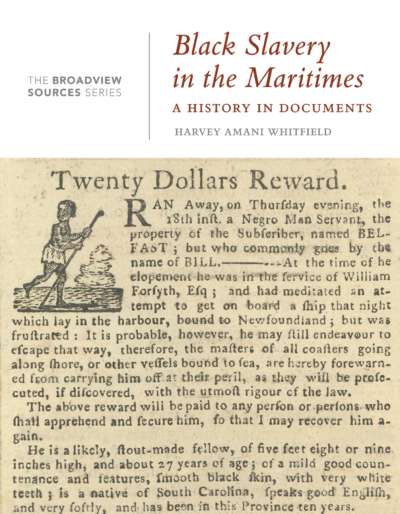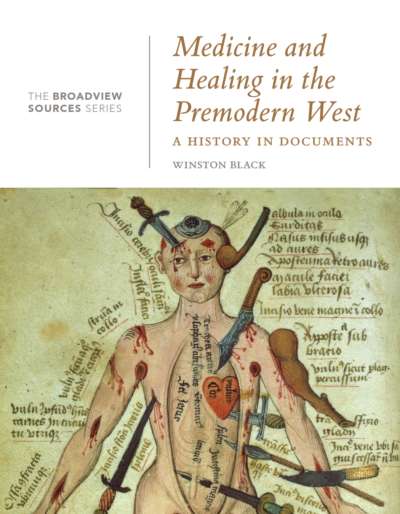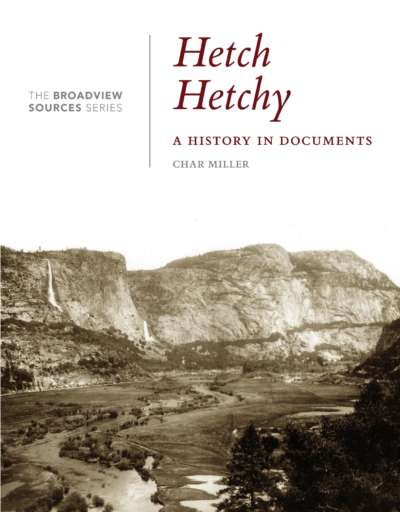The debate over immigration has been a hallmark of the American nation since its earliest days, and it persists in generating a complex spectrum of opinions and emotions. United States Immigration, 1800-1965 provides a compact yet diverse selection of primary documents that helps to illuminate immigration as one of the defining features of the American social, cultural, and political landscape.
A wide array of primary sources is included: documents written by immigrants that chronicle their own experiences; examples of pro- and anti-immigration sentiments and arguments; and government documents, including immigration laws and federal court rulings. In all, 75 documents (including 20 images) help to tell the story of United States immigration from roughly 1800 through to the Hart-Celler Act of 1965.
Comments
“Professor Pula has done historians the estimable service of gathering a comprehensive and revealing set of documents to support courses on United States immigration history. He includes narratives by immigrants themselves; articles, speeches, and cartoons by immigrant advocates and opponents; plus legislation, key court cases, and government reports. All are edited and annotated so that students can get maximum benefit. This is an outstanding contribution to the teaching of American immigration history.” — Paul Spickard, Distinguished Professor, University of California, Santa Barbara
“James Pula provides an excellent array of documents detailing the American immigrant experience. After a useful introduction which places the documents in historical context, Pula offers well-chosen selections from the immigrants, their supporters and detractors, as well as government and court records. Each selection, furthermore, has its own explanatory introduction. United States Immigration, 1800-1965 is an important and worthwhile collection that offers much to the student of immigration history.” — Ronald H. Bayor, Professor Emeritus, Georgia Institute of Technology
“James Pula’s book offers teachers and students several perspectives through which to analyze the history of immigration in the United States. Students will be able to hear the voices of the immigrants themselves, analyze the developments of both pro- and anti-immigrant arguments, and get a sense of the broad range of views on immigration within each branch of the US government. Taken together, the documents—along with a lively introduction, glossary, and bibliography—provide a critical tool for understanding the evolution of the immigrant experience, the debate on the role of immigration, and immigration enforcement prior to the Immigration and Nationality Act of 1965. This is a powerful resource for the classroom; I have waited a long time for such a reader!” — Maddalena Marinari, Gustavus Adolphus College
“United States Immigration, 1800-1965 is an excellent, comprehensive introduction to the history of the American immigration experience. The images and documents will enable students to thoroughly understand how successive generations of immigrants—and the reactions of natives to them—have shaped America in the past and will continue to do so into the future.” — Tyler Anbinder, George Washington University
“Pula’s systematic approach and eclectic selection of documents provide both comprehensible and comprehensive access to a vast, vital, and multifaceted subject. This publication should be on the bookshelf of every teacher and student who wishes to understand the evolution, nuances, and tortuous history of 165 years of American immigration.” — Marjory Harper, Journal of British Studies
Acknowledgements
Introduction
Chronology: United States Immigration Timeline, 1790–1966
Questions to Consider
PART 1: DOCUMENTS BY IMMIGRANTS
- 1. Excerpt from Henry Darley’s report on Irish riots in Philadelphia (1831)
- 2. Account of the Ursuline Convent fire (1834)
- 3. Letter from Christina Källström to her brother in Sweden (4 March 1848)
- 4. Petition from Californio landowners to the United States Congress (1859)
- 5. Editorial urging Irish residents to vote for Irish candidates, New-York Tribune (26 November 1867)
- 6. Memoir excerpt by Huie Kin-kwong about immigrant experience in 1860s and 1870s, Reminiscences (1932)
- 7. Report by Friedrich Kapp describing the immigrant’s arrival in New York (1870) 59
- 8. Excerpt from interview with Philippe Lemay, a French-Canadian immigrant to New England in the 1870s, reported by Louis Paré (1938)
- 9. Letter by Saum Song Bo to the editor of the New York Sun (30 June 1885)
- 10. Memoir excerpts about immigrating in 1892 by Rose Cohen, Out of the Shadow (1918)
- 11. Excerpt from journal article, “Italian Immigrants and Their Enslavement” (1893)
- 12. Speech by Carl Schurz arguing for the importance of language retention (1897)
- 13. Journal article by Rosa Sonneschein, “The American Jewess,” American Jewess (February 1898)
- 14. Announcement from the Polish Women’s Alliance of America, Kuryer Polski (25 October 1898)
- 15. Excerpts from the constitution of the Order Sons of Italy in America (1905)
- 16. Excerpt from Rev. Wacław Kruszka, A History of the Poles in America (1908)
- 17. Excerpt from Harriet Abbott Clark, Our Immigrants at Ellis Island (1912)
- 18. Newspaper article on Mexican reaction to repatriation, México (17 November 1929)
- 19. Editorial cartoon by Kazimierz J. Majewski, “Costly Cleanup of the Yalta Stain,” Dziennik Związkowy (26 June 1950)
- 20. Photograph by Fred Palumbo, “Miss April Lou … with six Chinese children,” New York World-Telegram & Sun (1964)
PART 2: DOCUMENTS ABOUT IMMIGRANTS
- PRO-IMMIGRANT
- 21. Excerpt from Thomas L. Nichols, Lecture on Immigration and Right of Naturalization (1845)
- 22. Editorial from Putnam’s Monthly responding to the Know-Nothings (May 1855)
- 23. Excerpt from essay by Bishop Martin J. Spalding supporting immigrants’ voting rights (1855)
- 24. Editorial cartoon by Thomas Nast, “Uncle Sam’s Thanksgiving Dinner,” Harper’s Weekly (20 November 1869)
- 25. Editorial cartoon by James Albert Wales, “Where Both Platforms Agree,” Puck (14 July 1880)
- 26. Editorial cartoon by Joseph Keppler, “Welcome to All,” Puck (28 April 1880)
- 27. Statement by Senator George F. Hoar opposing the Chinese Exclusion Act (1882)
- 28. Photograph by Jacob Riis, “Five Cents a Spot,” How the Other Half Lives: Studies among the Tenements of New York (1890)
- 29. Editorial cartoon by Udo J. Keppler, “Where Would We Be?,” Puck (30 March 1898)
- 30. Letter from Daniel De Leon to the editor of Daily People (July 1907)
- 31. Magazine article by Percy Grant, “American Ideals and Race Mixture,” North American Review (April 1912)
- 32. Poster by Howard Chandler Christy, “Americans All,” Library of Congress (1919)
- 33. Editorial cartoon by Raymond O. Evans, “The Americanese Wall,” Puck (25 March 1916)
- 34. Journal article by Rev. T.J. Brennan, “The Literacy Test,” The Catholic World (May 1917)
- 35. Journal article by Harris Weinstock, “Immigration and American Labor,” The Annals of the American Academy of Political and Social Science (1 January 1917)
- 36. Poem by Melvin B. Tolson, “Rendezvous with America” (1944)
- 37. Photograph, “Operation Pedro Pan” (1960–62)
- 38. Editorial cartoon by Herblock (Herb Block), “You Can Go Back to Wherever You Came From,” Washington Post (1 August 1965)
- ANTI-IMMIGRANT
- 39. Speech by Congressman Lewis C. Levin to the House of Representatives arguing against immigrant voting rights (1847)
- 40. Editorial cartoon by John H. Goater, “The Immigrant and the Vote” (c. 1850)
- 41. Leaflet advertising the Know-Nothing Party, “American Patriot” (1854)
- 42. Editorial in the New York Mirror, “America for the Americans,” The Wide-Awake Gift: A Know-Nothing Token for 1855 (1855)
- 43. Essay by Thomas Whitney, A Defence of the American Policy (1856)
- 44. Editorial cartoon by Thomas Nast, “The American River Ganges,” Harper’s Weekly (30 September 1871)
- 45. Editorial cartoon by Thomas Nast, “At Frisco,” Harper’s Weekly (20 March 1880)
- 46. Editorial cartoon by William Allen Rogers, “Poor House from Galway,” Harper’s Weekly (28 April 1883)
- 47. Speech by Henry Cabot Lodge to the Senate calling for a literacy test (16 March 1896)
- 48. Magazine article by John Mitchell, “Protect the Workman,” American Federationist (October 1909)
- 49. Excerpt from Madison Grant, The Passing of the Great Race (1916)
- 50. Editorial cartoon by Fred Morgan, “Put Them Out and Keep Them Out,” Philadelphia Inquirer (26 June 1919)
- 51. Editorial cartoon by Hallahan, “The Only Way to Handle It,” Literary Digest (7 May 1921)
PART 3: GOVERNMENT DOCUMENTS
- REPORTS
- 52. Thomas Jefferson’s First Annual Message to Congress (8 December 1801)
- 53. Report by Friedrich Kapp describing disease on the sailing ship Leibnitz (1870)
- 54. Report by Friedrich Kapp explaining the purpose of Castle Garden (1870)
- 55. Excerpt from article by Mary M. Kingsbury, “Socialism as an Educative and Social Force on the East Side,” Publications of the Christian Social Union (15 May 1898)
- 56. Message from President Harry Truman to Congress vetoing the McCarran-Walter Act (25 June 1952)
- 57. Statement from Attorney General Nicholas Katzenbach supporting immigration reform (1965)
- LEGISLATION
- 58. Excerpts from Naturalization Act of 1802, Congressional Record, Seventh Congress, Session I, Chapter 28 (14 April 1802)
- 59. An Act to Exclude Negro and Mulatto Immigrants, Congressional Record, Seventh Congress, Session II, Chapter 10 (1803)
- 60. The Steerage Act of 1819, Congressional Record, Fifteenth Congress, Session II, Chapter 46
- 61. The Naturalization Act of 1870, Congressional Record, Forty-first Congress, Session II, Chapter 254
- 62. The Page Act of 1875, Congressional Record, Forty-third Congress, Session II, Chapter 141
- 63. The Chinese Exclusion Act of 1882, Congressional Record, Forty-seventh Congress, Session I, Chapter 126
- 64. The Immigration Act of 1885, Congressional Record, Forty-eighth Congress, Session II, Chapter 164
- 65. Excerpts from the Immigration Act of 1891, Congressional Record, Fifty-first Congress, Session II, Chapter 551
- 66. Excerpts from the Immigration Act of 1903, Congressional Record, Fifty-seventh Congress, Session II, Chapter 1012
- 67. Excerpts from the Immigration Act of 1917, Congressional Record, Sixty-fourth Congress, Session II, Chapter 29
- 68. The Immigration Act of 1921, Congressional Record, Fifty-seventh Congress, Session I, Chapter 8
- 69. Excerpts from the Immigration Act of 1924, Congressional Record, Sixty-eighth Congress, Session I, Chapter 190
- 70. Excerpts from the Immigration and Nationality Act of 1952, United States Statutes at Large, Vol. 66, Eighty-second Congress
- 71. Excerpts from the Immigration and Nationality Act of 1965, Congressional Record, Eighty-ninth Congress, Session I, Senate
- COURT CASES
- 72. Ho Ah Kow v. Nunan: Ho Ah Kow claims the Pigtail Ordinance caused him irreparable harm (1879)
- 73. United States v. Wong Kim Ark: Wong Kim Ark tests the Fourteenth Amendment, 169 US 649 (1898)
- 74. Takao Ozawa v. United States: The Supreme Court denies naturalization to Japanese immigrants, 260 US 178 (1922)
- 75. United States v. Bhagat Singh Thind: The Supreme Court denies naturalization to people from the Indian subcontinent, 261 US 204 (1923)
Epilogue
Glossary of Terms
Select Bibliography
Permissions Acknowledgements
Index
James S. Pula is Professor of History at Purdue University Northwest. He is the author of Polish Americans: An Ethnic Community and editor of The Polish American Encyclopedia.

